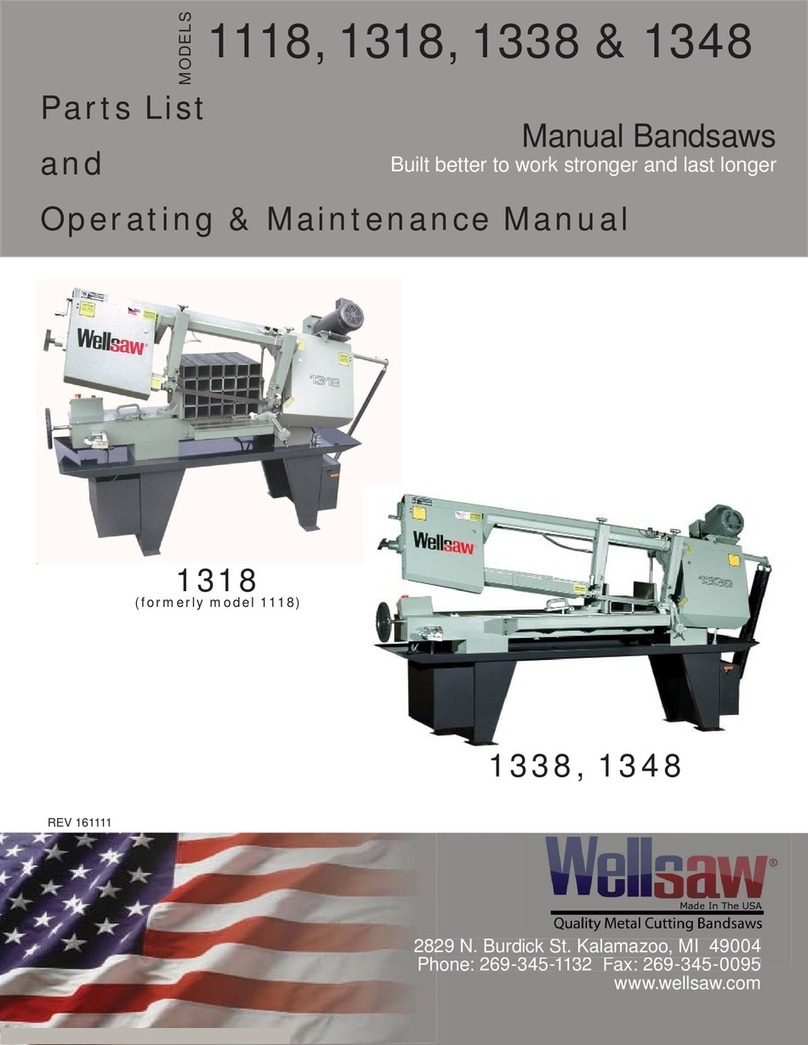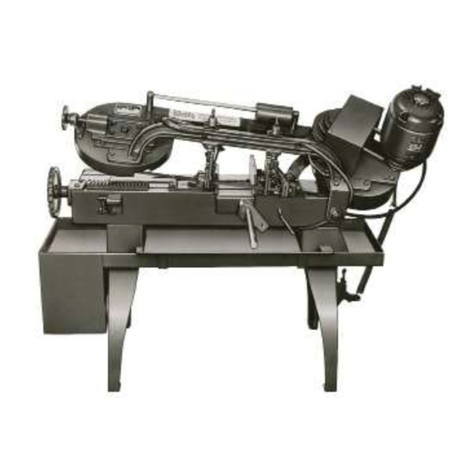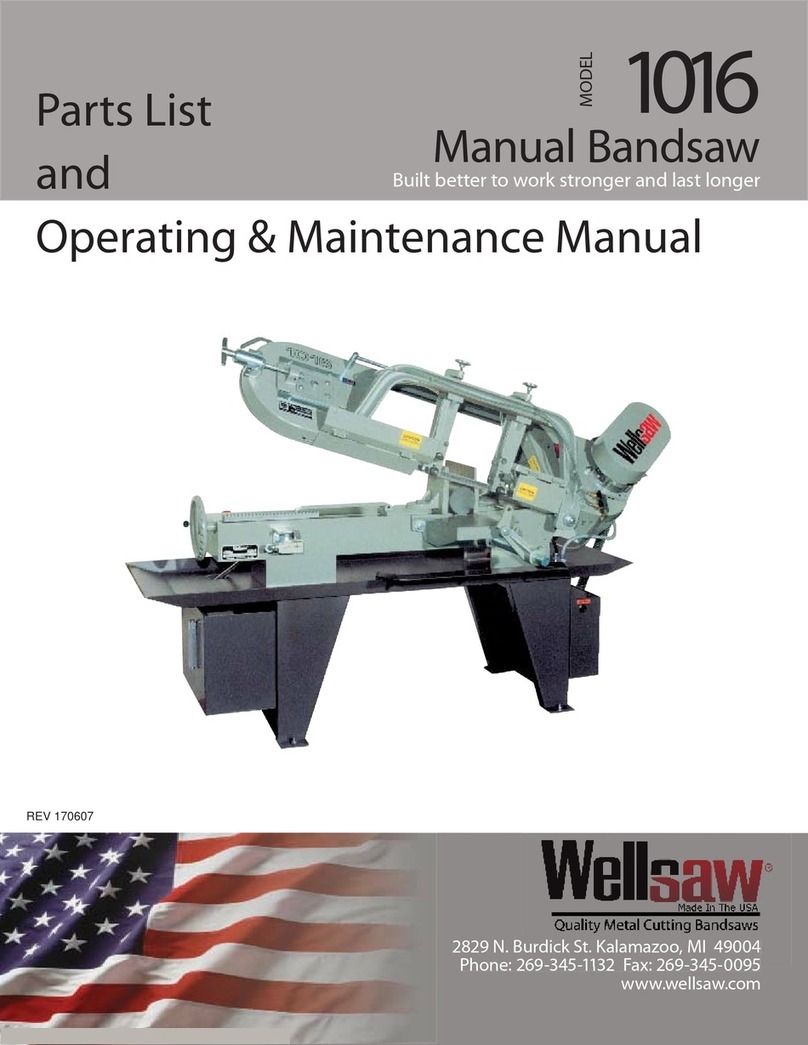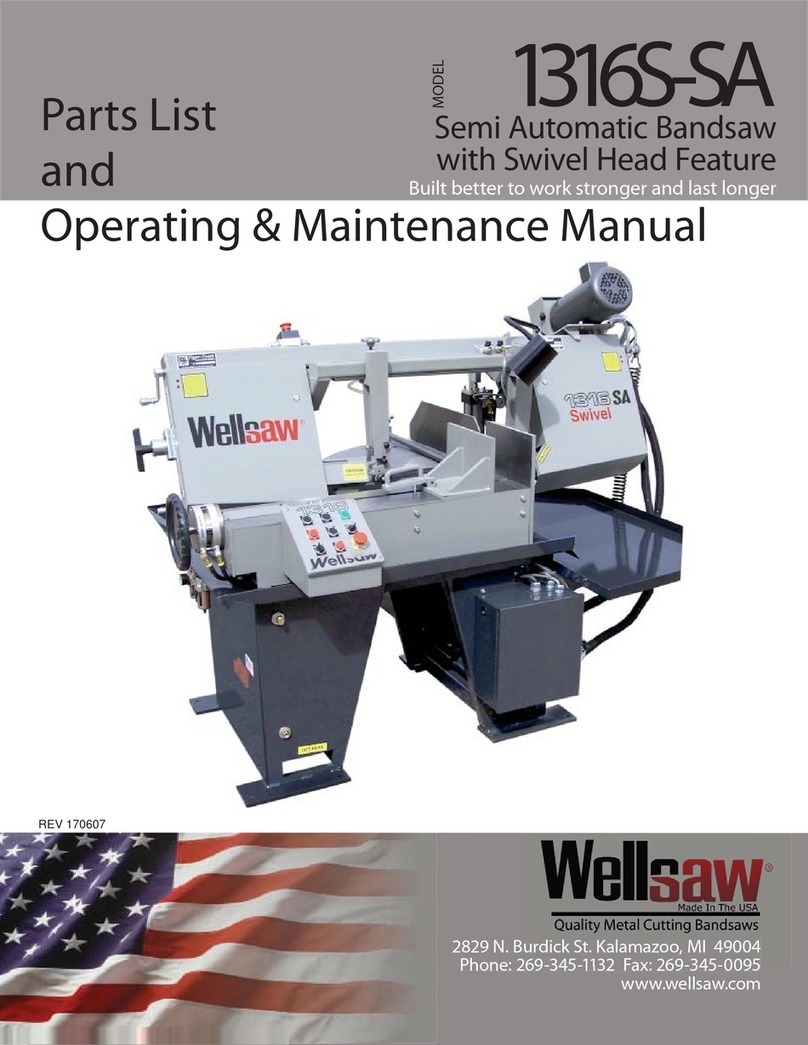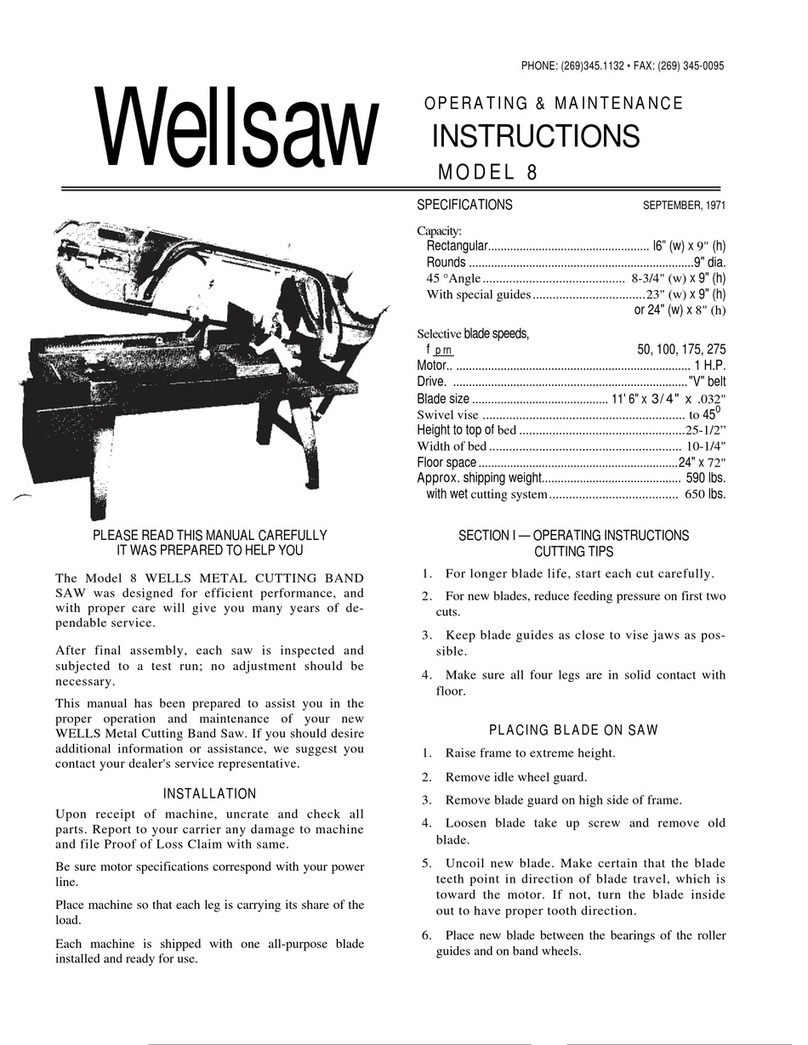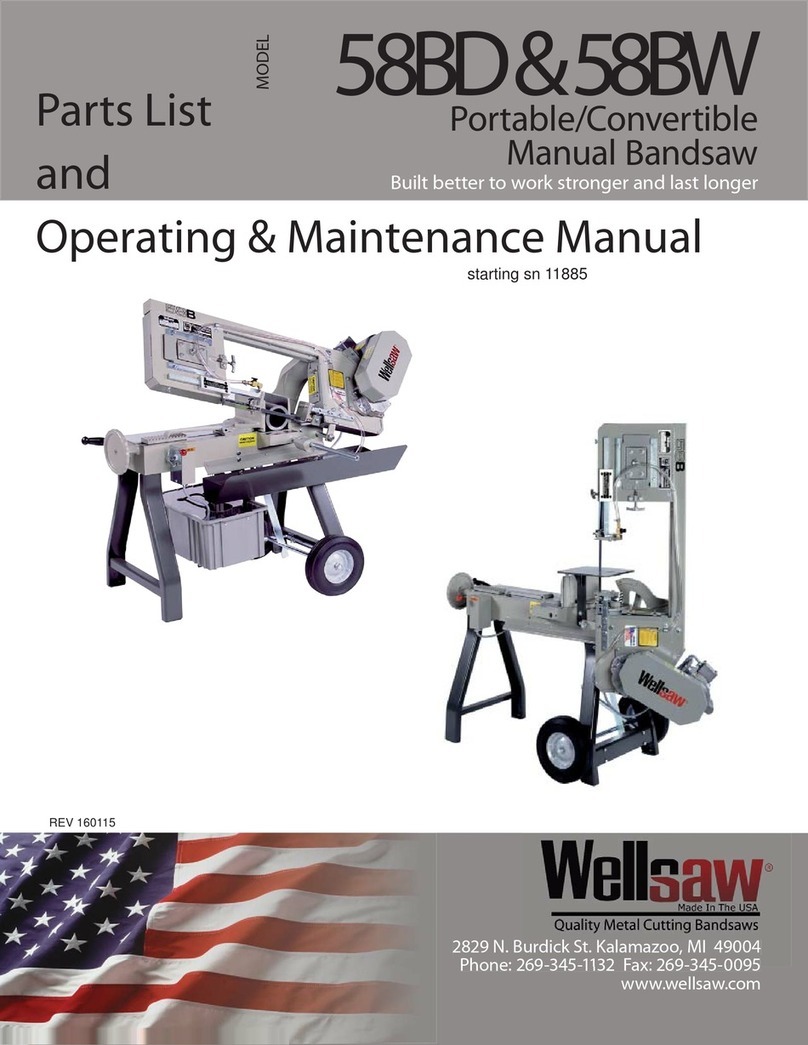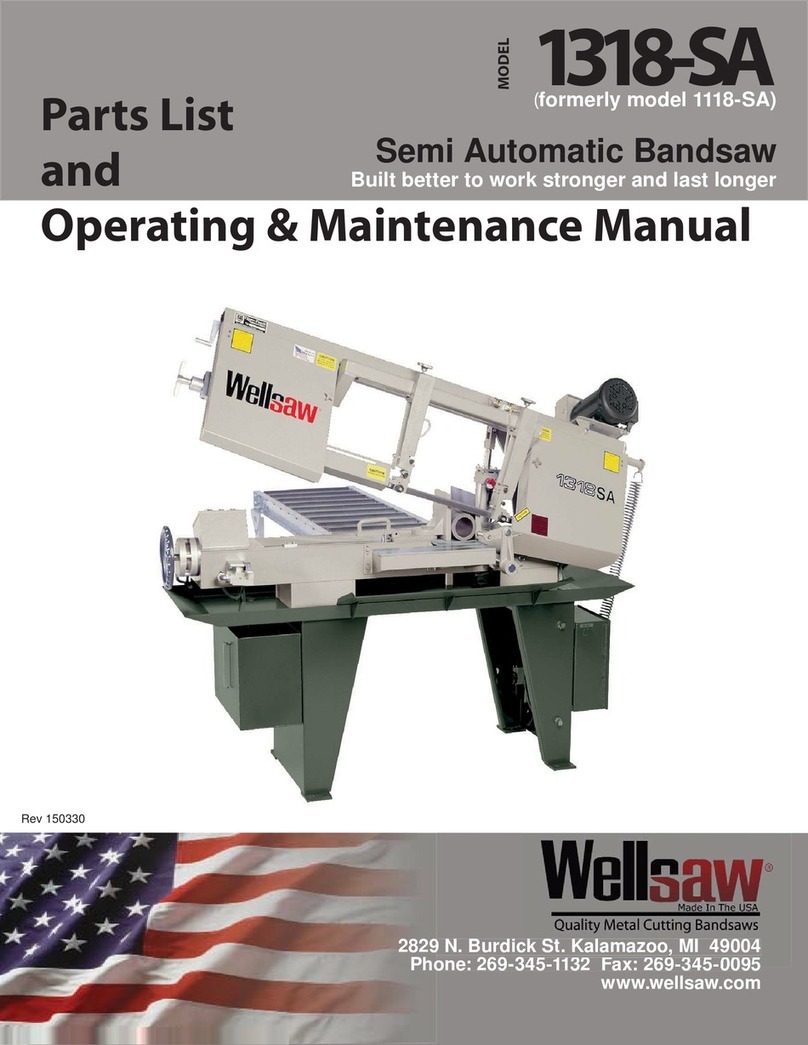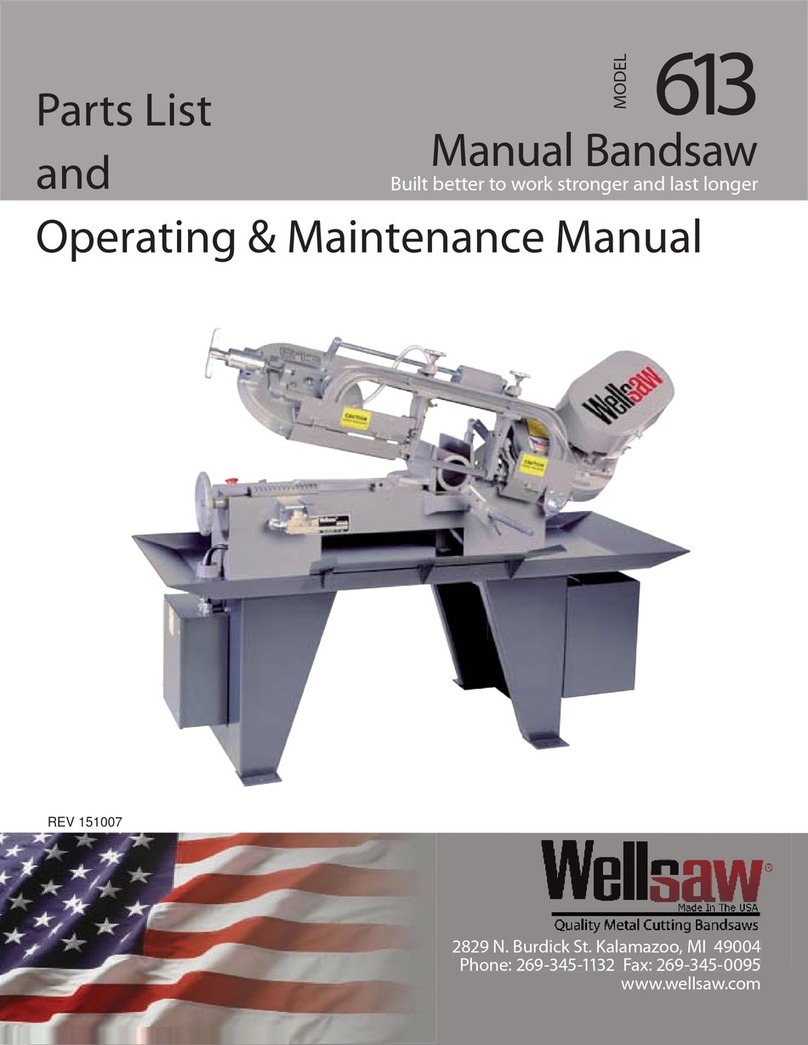
8
Fixed Vise Jaw
The two pins in the fixed vise jaw should be kept in
place in order to ensure square cuts. For cutting
angles, the pins must be removed and the turned to
the desired position and tightened with clamp bolts.
These pins enable operators to quickly relocate the
fixed vise jaw for approximate 90°cutting. For
final, accurate cutting, the fixed vise jaw should be
squared with the blade. (See Guide Alignment)
Sliding Vise Jaw
The sliding vise jaw is fitted with a lift plate and
ratchet dog for quick action. A hand wheel tightens
the vise on the workpiece. Excessive pressure is not
required to hold workpiece securely.
Hydraulic Feed Control
The feed rate is hydraulically controlled with a
needle valve located on the side of the saw bed.
Caution: Do not attempt to loosen or remove hoses
until the saw frame is supported in its “Down”
position.
Feed Pressure Adjustment
Maximum feed pressure is obtained with the frame
spring adjusted as close to the end of the saw frame
as possible. To decrease pressure, turn handle on
opposite end of frame counterclockwise. To
increase pressure turn handle in a clockwise
direction. Use lighter feed pressure when cutting
thin-wall material or irregular shapes.
Blade Brushes
Brushes should be cleaned frequently in kerosene
and reversed to take advantage of both rows of
bristles. For efficient cutting and blade life, keep
blade brushes adjusted so they are contacting blade
teeth and replace them when wore.
Motor Switch
The “Start-Stop” motor starter is provided with
heater coils to de-energize the circuit if an overload
occurs. Allow the coil to cool before trying to
restart the motor.
Low/No Voltage Control also de-energizes the
circuit and prevents automatic restarts after power
is restored. Allow the coil to cool.
Blade Guide Adjustment
To properly align the saw blade for a straight
and accurate cut, do the following:
1. Square the stationary vise jaw. Make sure it is
square to the front of the vise slot. Check by placing
a combination square against the front of the vise
slot in the saw bed. Slide the square toward the
stationary vise. Make any necessary adjustment to
the vise jaw to bring it into square. Set the
combination square so that one leg is along the face
of the stationary vise and check to see that the blade
is square to the vise jaw. If it is not square, follow the
instructions for horizontal adjustment.
2. Vertical Adjustment. The back of the saw blade
should just touch the carbide back up guide (item 15
or 23 in the parts drawings) when the saw is running
but not cutting. To adjust, loosen the two cap screws
8 [A] and move the block up or down as required.
(Before making this adjustment, be sure the back of
the blade is properly contacting the flange on both
the drive and idle wheels).
3. Horizontal Adjustment. Loosen the two cap screws
8 [B] securing the horizontal adjusting block (items
11 & 12 of the parts drawing). Turn the top
adjusting bolt (item 13 of the parts drawing) to move
the blade either in, toward the saw bed, or out, away
from the saw bed. Normally, the blade comes off the
Drive Wheel with a minimum amount of adjustment
needed in the Horizontal Adjusting Block. The Idle
End adjusting block is more likely to require
adjustment.
4. Blade Tilt. To ensure the blade is perpendicular to
the bed of the saw, loosen the two cap screw 8 [C]
holding the Guide Support (28 & 29 of the parts
drawing) and turn the bottom adjusting bolt (13 of
the parts drawing). Set the combination square on
the saw bed with the end of the rule butted against
the blade above the set of the teeth. Use a 1-1/2
thousandths (.0015”) shim and slide it along the top
and bottom edge of the rule where it meets the saw
blade. If the shim slides between the blade and the
rule at either the top or bottom, the blade guides
must be adjusted.
5. Safety. Ensure that all bolts are properly tightened
and that all guards are in place before using the saw.
